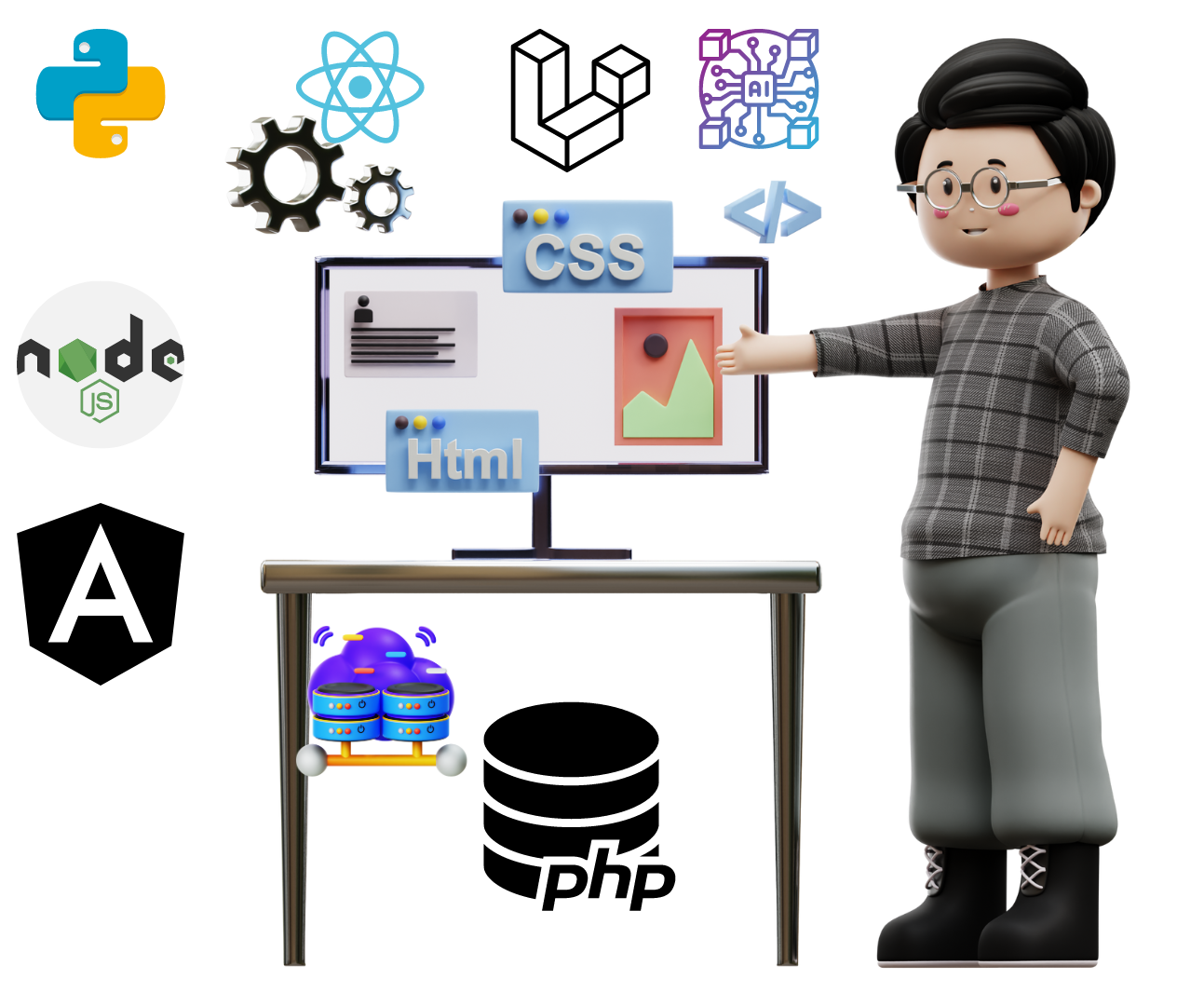

Web application development is the process of creating application programs that reside on remote servers and are delivered to the user’s device over the Internet.
The development process involves several steps, including designing the web application’s architecture, coding the application, testing it for performance and bugs, and deploying it for public or private use. It encompasses a range of programming languages and technologies, such as HTML, CSS, JavaScript(Angular, React, Vue), and more advanced server-side languages like PHP(Laravel), Python, or Node JS. The goal is to create a functional, secure, and efficient web application that meets the specific needs and goals of its users.
- Scalability
- Customization and Flexibility
- Data Analysis and Reporting
- Real-Time Performance and Maintenance

By centralizing updates and reducing physical infrastructure needs, web applications cut down operational costs and minimize software maintenance expenses, making them a cost-effective solution for businesses.
They automate and streamline processes, facilitating better data management and integration with other systems, which improves overall operational efficiency and data accessibility.
Web applications provide a dynamic platform for customer interaction, offering real-time services and personalized experiences. This can significantly enhance customer satisfaction and retention.

1. E-commerce Platforms
These are online marketplaces where users can browse, select, and purchase products or services. Examples include Amazon and eBay.
2. Financial Applications
These include online banking portals, financial planning tools, and trading platforms that allow users to manage their finances and investments.
3. Booking and Ticketing Systems
Web applications that facilitate reservations and bookings for events, travel, accommodations, or services, such as Airbnb or Booking.com.
4. Customer Relationship Management (CRM) Systems
Applications like Salesforce help businesses manage and analyze customer interactions and data throughout the customer lifecycle, with the goal of improving customer service relationships and assisting in customer retention and sales growth.
5. Educational Platforms
These include learning management systems (LMS) like Moodle or platforms offering online courses like Coursera ,which provide tools for both learners and educators.
6. Enterprise Resource Planning (ERP) Systems
These are comprehensive business management platforms that integrate all facets of an enterprise into one system, such as inventory, sales, accounting, and HR operations.







